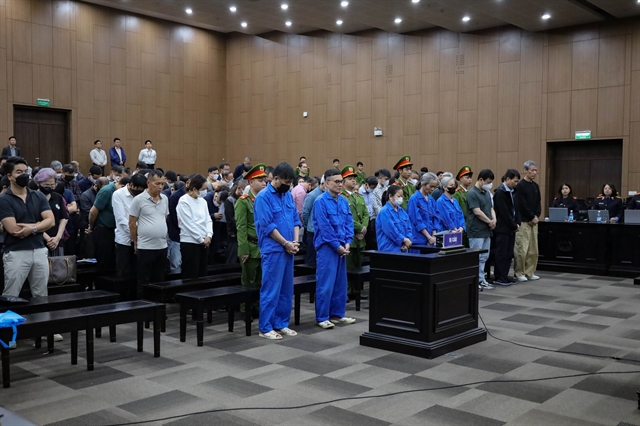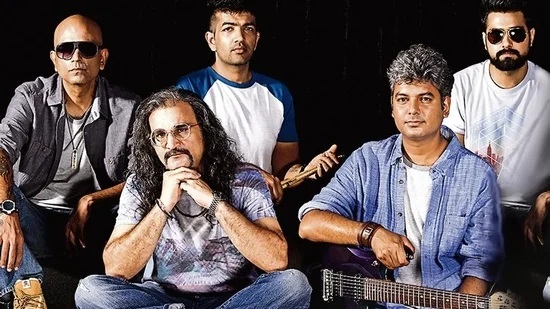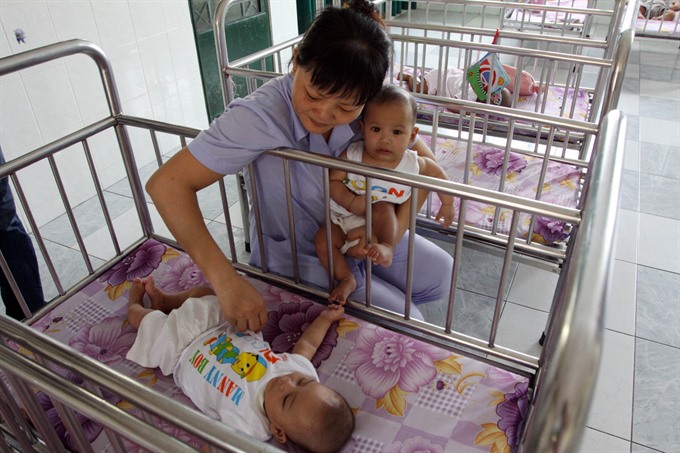 Society
Society

The proportion of people with HIV/AIDS in HCM City who have health insurance surged to 70 per cent last February from 20 per cent in April last year, according to the city HIV/AIDS Prevention Centre.
 |
| A caregiver attends to children with HIV at the Linh Xuân Child Sponsor Centre in HCM City. — VNA/VNS Photo Phương Vy |
HCM CITY — The proportion of people with HIV/AIDS in HCM City who have health insurance surged to 70 per cent last February from 20 per cent in April last year, according to the city HIV/AIDS Prevention Centre.
The Việt Nam Administration of HIV/AIDS Control reported that aid under the US President’s Emergency Plan for AIDS Relief, known as PEPFAR, for free anti-retroviral (ARV) drugs and treatment would be cut by 40 per cent this year end and end next year.
For the 2016-20 period the Government has allocated only VNĐ100 billion (US$4.4 million) for buying ARV drugs for health facilities, Dr Vũ Đức Long of the administration, said.
This means HIV/AIDS patients have to pay for medicines and treatment, he told a workshop held on Thursday to review HIV/AIDS treatment in the city last year paid for by health insurance.
But many of the patients have financial difficulties, he said.
Dr Dương Minh Hải of the HIV/AIDS Prevention Centre said since last May the centre and other relevant organisations have counselled 27,685 out of 29,402 patients getting treatment.
This has helped them understand the benefits of health insurance, he said.
As a consequence 70 per cent of the patients have bought health insurance, he added.
Of the remaining, 408 cannot afford it, 751 lack identification cards and other documents such as temporary or permanent residential book.
Dr Nguyễn Hữu Hưng, deputy head of the city Department of Health, said the department has recommended that the People’s Committee should approve the purchase of health insurance for poor HIV/AIDS patents using the abundance of money in the health insurance fund.
Nguyễn Anh Phong of the Việt Nam Network of People Living with HIV said members want to collaborate with the centre to help people with HIV/AIDS lacking relevant documents buy insurance.
They hope to help them acquire the documents, he explained.
Bùi Đức Dương, deputy head of the Việt Nam Administration of HIV/AIDS Control, said however that patients without insurance are “not left behind” because the managers and staff of health facilities usually mobilise donations to fund their treatment.
Thủ Đức District Hospital, for instance, has funded the purchase of health insurance for 40 patients who cannot afford it.
Tiêu Thị Thu Vân, head of the city HIV/AIDS Prevention Centre, said patients are now treated at four city-level hospitals, many preventive health centres and 16 district general hospitals.
Around 3,000 are treated at ward and commune health centres, she said.
The Department of Health plans to allow private general clinics to treat patients with ARV drugs, she added.
As of January 31 last year 116,000 patients were getting ARV therapy at 393 health facilities and 32 prisons, according to the Việt Nam Administration of HIV/AIDS Control. — VNS




